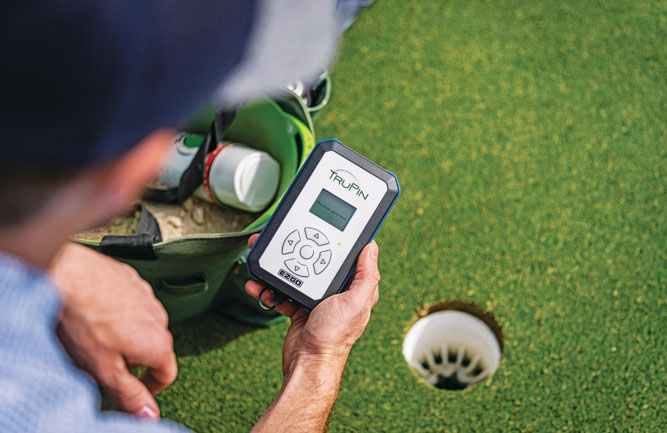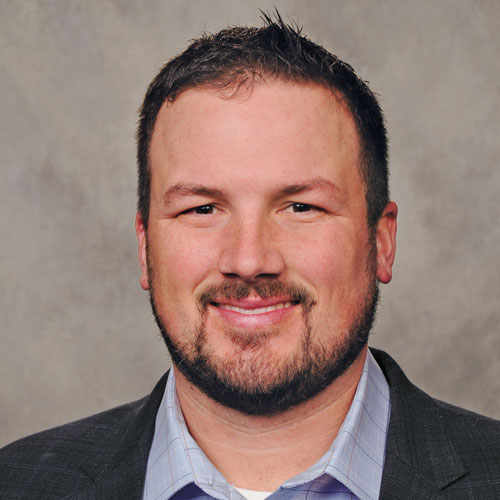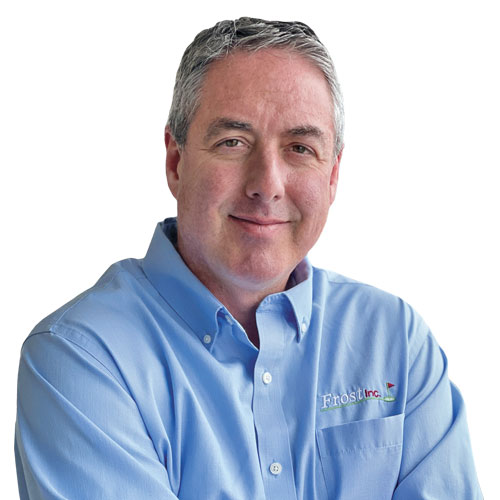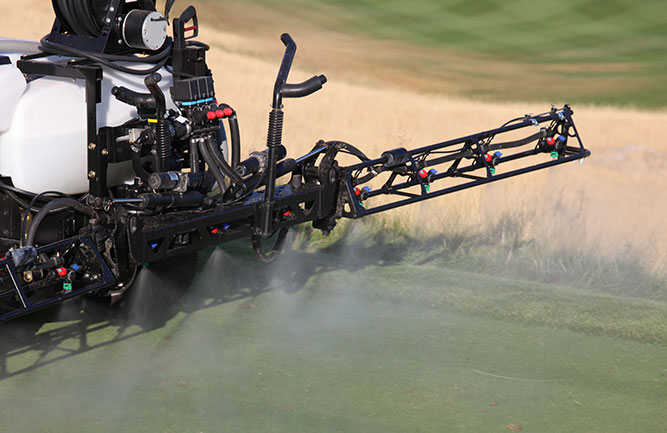How precision agriculture GPS technology can benefit your course

GPS spray technology can save time and make your spray operation more precise, reducing inputs and waste. (Photo: Pace Technology)
Superintendent of Sammamish, Wash.’s Aldarra Golf Club, Sean Reehoorn and his team utilize three GPS-equipped sprayers. GPS spraying is popular in the agriculture industry and is becoming more common in golf.

Sean Reehoorn
By utilizing precision agriculture GPS technology, Reehoorn can spray every maintained area of the club’s 18-hole championship course — within specifically defined sections — whenever he needs to. And, since the club’s sprayers feature the latest technology advancements, they’re able to communicate with one another through the cloud.
“Due to these upgrades in technology, we can divide and conquer, so to speak, whenever it’s time for us to spray our problematic areas,” he says.
So far, the results have exceeded Reehoorn’s expectations. Since his team no longer sprays the same area twice in the same application due to individual nozzle control, he estimates his team reduced the area sprayed by 20 percent in addition to the time spent spraying.
“We’ve saved, on average, 1 hour for each application, while using the GPS-equipped sprayers, compared to former equipment,” he stresses. “As a result, we’ve been able to spend our time on other projects and complete them earlier in the day than we previously could.”
These results led Reehoorn to recommend precision agriculture GPS technology to other superintendents, as he said he considers it an upgrade for any golf course. After all, it not only improves accuracy but also reduces inputs.
“While the scrutiny of pesticide and fertilizer usage on golf courses continues to rise, GPS technology provides superintendents assurance, with regards to accuracy, which helps ensure best management practices compliance,” he says.
The bottom line is to consider utilizing a local GPS technology provider this year.
“In doing so, you’ll find a suitable, cost-effective upgrade to your sprayers — and you’ll notice the benefits, regarding cost and time savings, nearly immediately,” he adds.

Ken Rost
Frost Inc.
Ken Rost
President and CEO
The most impressive advancements in GPS technology have been in the receivers. New receivers have faster processors to minimize convergence time and make more accurate repeatability. Earlier generations of receivers would require 30 to 40 minutes to do all the math necessary to locate signals and make error corrections. The new receivers can achieve this in seconds, though. Therefore, users no longer have to wait for a signal to return after traveling under bridges or dense tree cover. And they’ll have repeatability — within 1 centimeter — as they use a generation receiver like Novatel’s Smart7, along with the Terrastar-X error correction subscription. These receiver advancements will replace obsolete RTK systems that require more investment and often don’t work in certain geographical locations.

David Anderson
John Deere
Dave Anderson
Product Manager
GPS technology continues to advance every year. Improvements in receivers — with the ability to pull in information from additional satellite constellations, for instance — continuously provide enhanced accuracy and precision for critical operations, such as application work. This accuracy allows users to be more efficient and sustainable in their practices. Additional improvements also unlock their abilities to receive satellite-based Real Time Kinematic corrections, which will eliminate the need for additional, on-site infrastructure, commonly referred to as a “base station.” These improvements will begin to find their way onto future John Deere equipment, manufactured specifically for the turf industry. Furthermore, users can utilize GPS technology for lower accuracy needs like machine tracking. For example, at John Deere, we’ve also introduced standard connectivity for our ride-on mowing equipment for Model Year 2023.

Kevin Hauschel
GreenSight
Kevin Hauschel
Head of West Coast Sales
A foundational component of many recent golf course maintenance technologies, GPS is helping to revolutionize golf course maintenance. As the latest innovation in this field, autonomous mowers, for example, feature GPS technology, which enables superintendents to navigate courses without any human intervention. Additionally, due to GPS technology, they can mow turf in a more precise and efficient manner, saving time and resources, ensuring they can maintain courses at a higher standard. Consequently, GPS technology is becoming more prevalent in the golf industry as golf course managers opt for GPS-enabled equipment — such as autonomous drones and mowers, along with sprayers and sensors — to maintain their courses more effectively. As GPS technology continuously evolves, maintenance will, in turn, likely become more efficient and cost-effective.

Eric Keister
Pace Technology
Eric Keister
National Sales Manager
Pace Technology recently unveiled TruPin, a new handheld device that enables golf courses to update new pin placements and par-3 tee locations quickly, easily and accurately in their Pace system’s course maps. While using a handheld device, cup cutters will stand over a new location, select the right hole and press a button. From there, TruPin will automatically update the pin or tee location, yardage and other information in the Pace technology platform, so that golfers can track their distance to the cup from their golf car. TruPin yardages are accurate within 1 meter, and the system uses a cellular network for reliability. The system also helps eliminate inconsistency and human error, with regards to measuring yardages and making proper pin placements.












